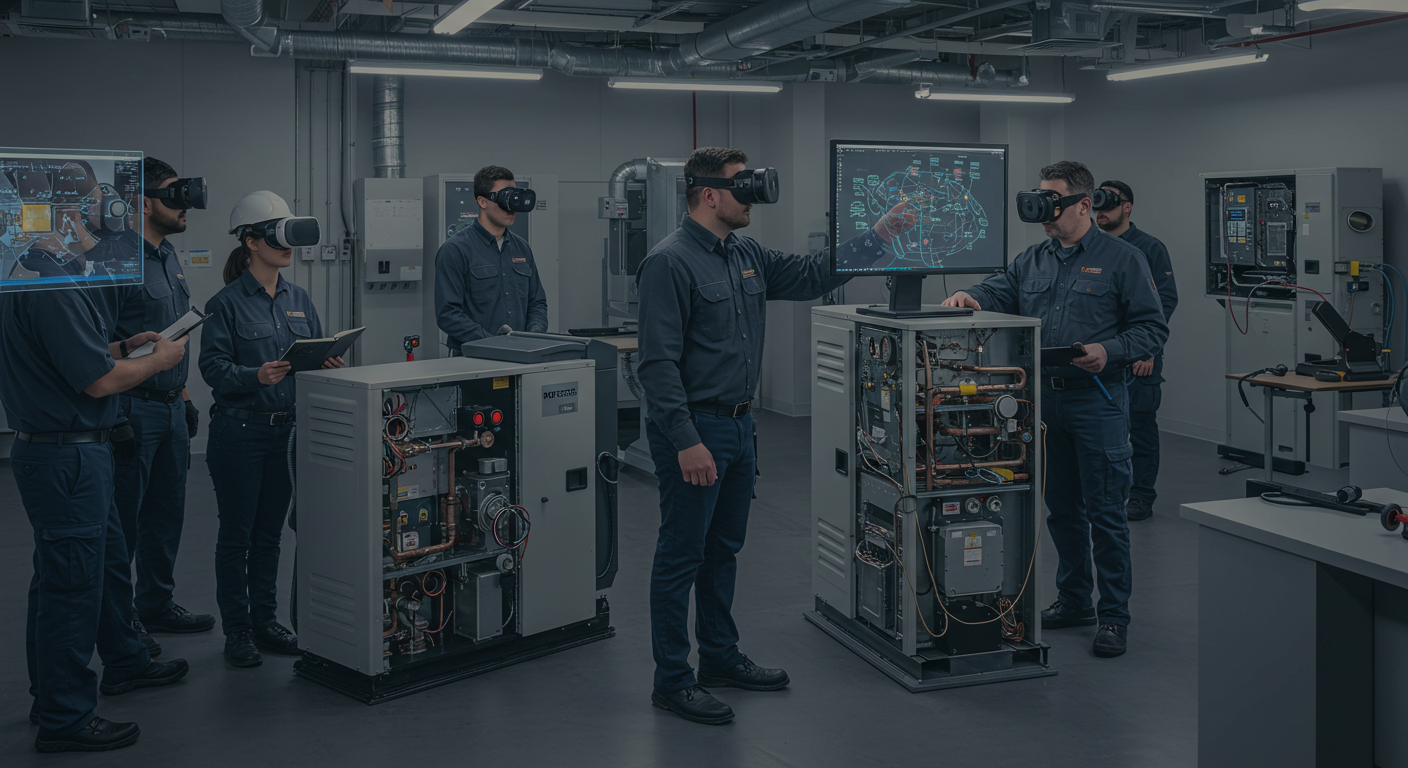
Preparing Your Team for Leadership Roles in HVAC
As the HVAC industry faces a 38% workforce deficit, with over 110,000 vacant technician positions, the demand for leadership and management skills is at an all-time high. Add to that the challenge of a significant diversity gap, with only 3% of HVAC technicians being female, and it’s clear that the industry must prioritize leadership development. This post will guide you through preparing your team for leadership roles, ensuring that your company is ready to meet these challenges head-on.
Understanding the Need for Leadership in HVAC
The HVAC industry is not just about numbers; it’s about equipping your team with leadership, business acumen, and digital competency. With 75% of HVAC companies planning to invest in technician upskilling programs by 2025, continuous learning is key. The roles of technicians are evolving, requiring mastery of advanced system diagnostics, remote and IoT controls, and regulatory compliance. Leadership training is increasingly paired with instruction on job costing, project management, and customer service.
The Role of Upskilling and Diversity in Leadership Development
Investments in Registered Apprenticeships are growing, with initiatives like the Biden-Harris Administration allocating $244 million. These programs now often include integrated leadership and business modules, crucial for career advancement and tackling operational challenges. Promoting diversity in leadership roles is also essential, as a more inclusive environment fosters innovation and growth.
Strategies for Effective HVAC Team Leadership
Organizations that blend certifications, advanced tools, and flexible schedules report stronger employee retention and greater readiness for leadership transitions. By focusing on comprehensive development programs, you can ensure your team is prepared for future challenges.
- Invest in continuous upskilling programs that focus on both technical and leadership skills.
- Encourage diversity in leadership by promoting inclusive practices and supporting female technicians.
- Leverage vendor training and support networks, like those offered by Daikin, to enhance leadership-oriented skill development.
- Implement flexible schedules to accommodate ongoing training and development.
Conclusion
With the HVAC industry’s projected global revenue reaching $271.90 billion by 2025, preparing your team for leadership roles is an investment in your company’s future. By fostering a culture of continuous learning and diversity, you position your team to drive business growth and operational efficiency.
Ready to take the next step in HVAC leadership development? Start by assessing your current training programs and making necessary adjustments to meet future demands.
FAQ: Preparing Your Team for Leadership Roles in HVAC
What is HVAC leadership training?
HVAC leadership training involves developing skills that go beyond technical expertise, focusing on management, communication, and strategic planning to prepare individuals for supervisory roles.
How can I promote diversity in HVAC leadership roles?
Promoting diversity involves creating an inclusive culture, supporting female technicians, and implementing policies that encourage diverse candidates to seek leadership positions.
What are the benefits of HVAC team development?
Effective team development leads to improved employee retention, enhanced job performance, and the ability to meet the evolving demands of the HVAC industry.
Why is continuous upskilling important in HVAC?
Continuous upskilling helps technicians stay current with industry advancements, enhances their leadership potential, and ensures your company remains competitive.
How do I prepare HVAC supervisors for future challenges?
Preparing HVAC supervisors involves providing comprehensive training in both technical and leadership skills, encouraging continuous learning, and fostering a supportive work environment.

